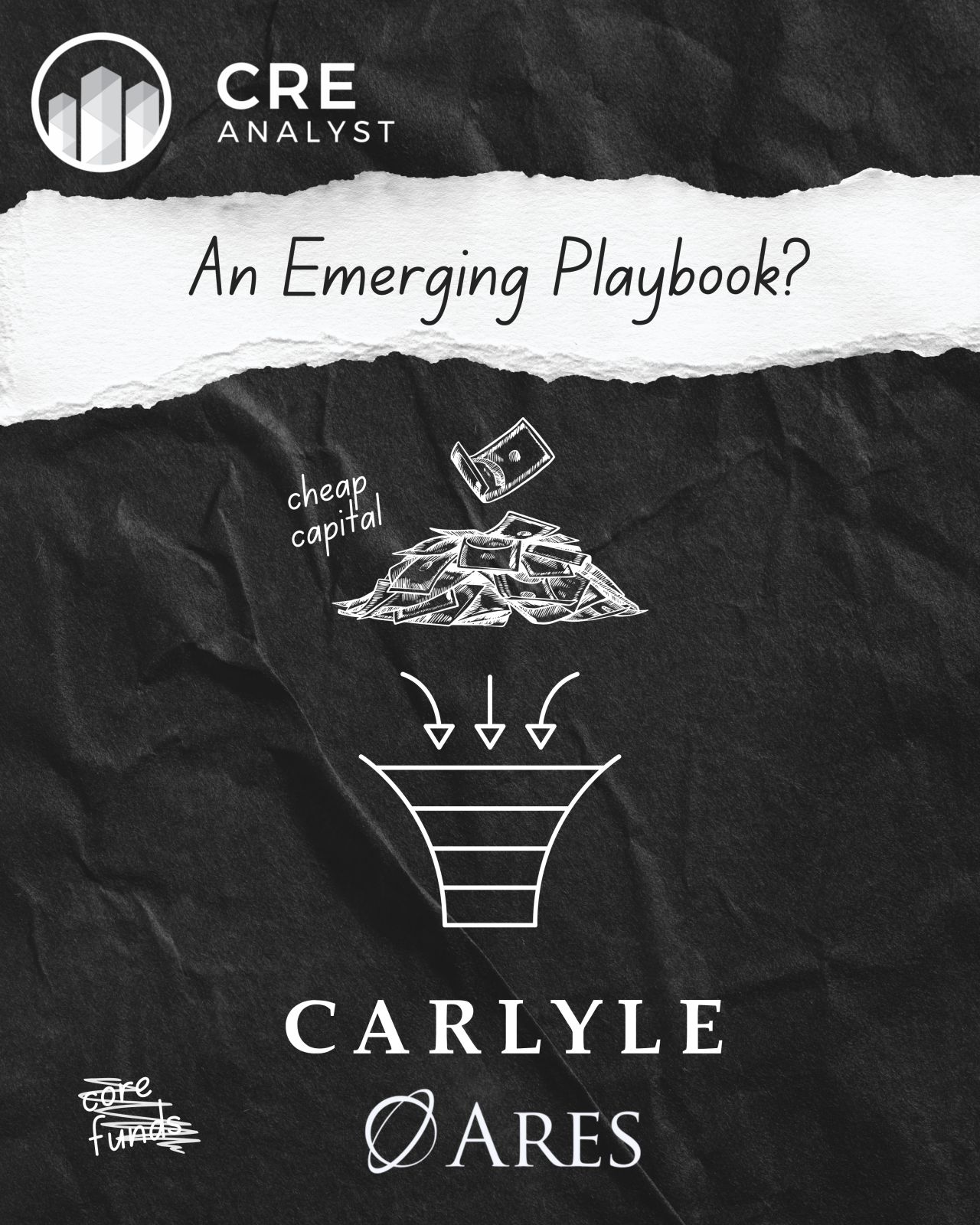
Core capital may help restart the commercial real estate transaction market. But this time, it’s coming back with a different shape and a different agenda.
---- Quick background ----
Sellers remain anchored to 2021 valuations.
Many locked in cheap, long-term debt and aren’t forced to transact, so they wait.
Most of the dry powder in the market is value-add or opportunistic. These funds don’t want stabilized deals at peak pricing. They want 15% returns.
What happened to income-oriented capital?
Historically, perpetual core funds filled that gap. They were the clearing mechanism—long-term capital buying stabilized yield.
But that model cracked. When NAVs fell and redemptions surged, many open-end funds were sidelined. Redemption queues grew, sales slowed, and investors backed away.
Now, there are early signs of a return.
Earlier this week, the Arkansas Teacher Retirement System committed $200 million across two open-end income strategies, which could be an early read on an emerging trend.
---- Ares Industrial Real Estate Fund (AIREF) ----
$3.1B built off Ares’ acquisition of Black Creek.
200+ industrial assets concentrated in high-barrier logistics markets.
Targets 50–100 bps of outperformance over the NCREIF Industrial Index
Leverage at 39%, with cap at 50%.
Up to 50% of GAV allowed in non-core investments, including development.
Consistently outperformed ODCE on a net basis.
---- Carlyle Property Investors (CPI) ----
A $6.9B open-end core-plus fund focused on demographic and structural demand themes: single-family rentals, manufactured housing, senior housing, data centers, and self-storage.
Net returns have exceeded ODCE by 486 bps since inception (2015).
Focuses on moderate repositioning and leasing value—minimal development.
Non-core exposure capped at 10%; currently just 3.5%.
Emphasizes asset-level operating upside over financial engineering.
Core no more?
This is not an index fund. It targets 9-11% net returns by betting on long-term demand.
---- A quiet but powerful shift ----
The ODCE funds that once anchored institutional real estate portfolios are not the ones attracting new capital. Their diversified, low-volatility approach still has a place—but in a market where flexibility, thematic exposure, and sharper execution matter, they’re facing real competition.
AIREF and CPI offer a more focused, more tactical version of core-plus. And if capital continues to flow to strategies like these, the traditional core universe could see a slower and more fragmented recovery than expected.
Income-oriented capital may be returning but with a more selective mandate and sharper elbows.
PS -- Understanding the inner workings of the CRE capital markets is essential. If you’re looking to sharpen your skills, DM to learn more about our upcoming FastTrack cohort.

COMMENTS